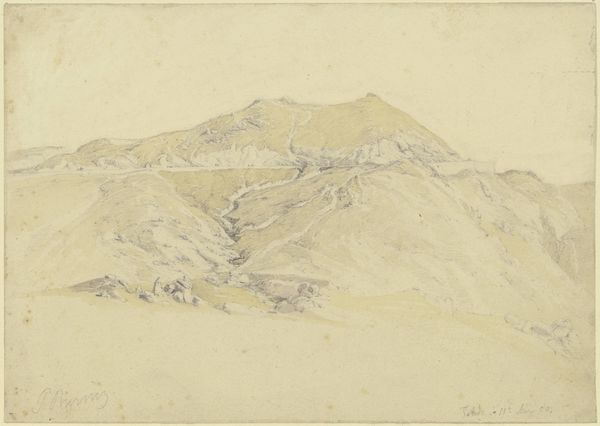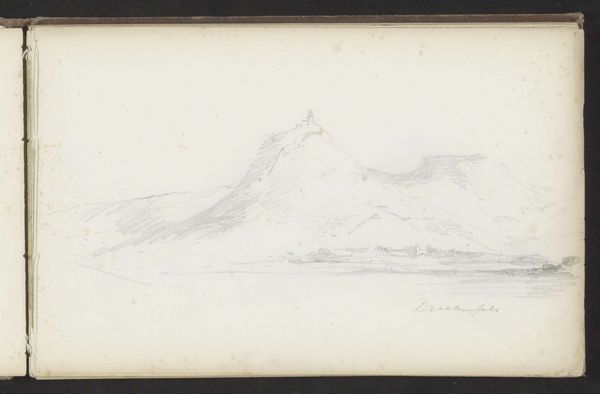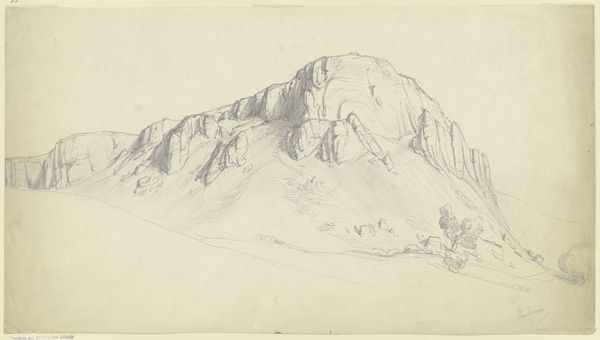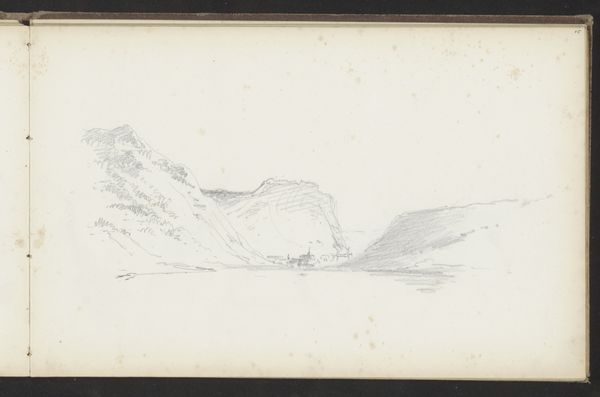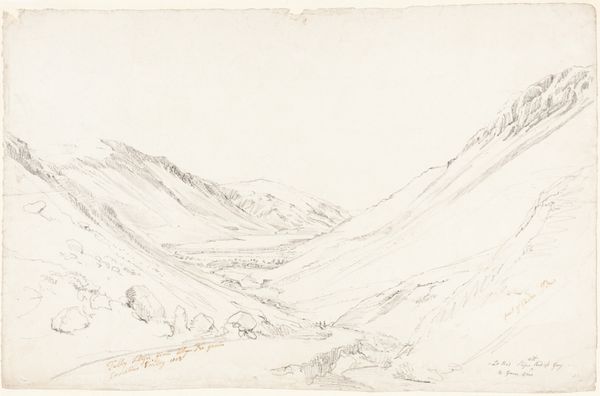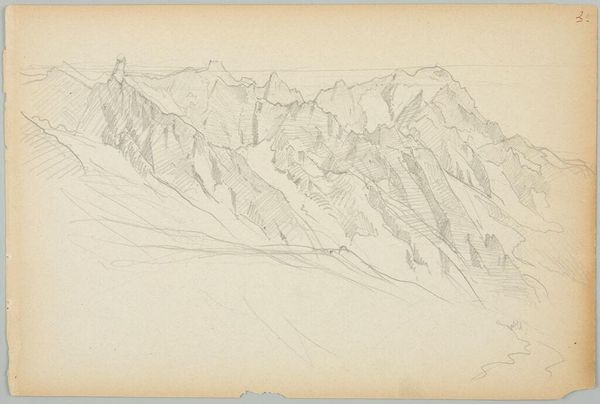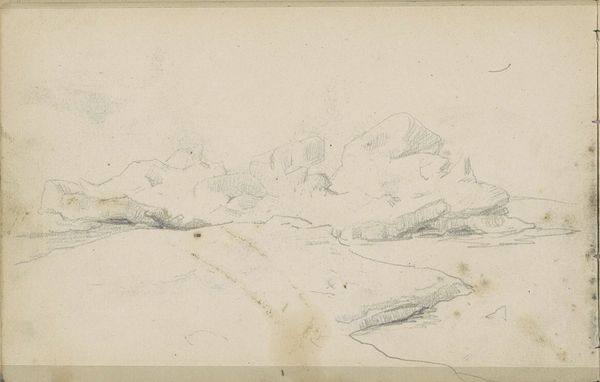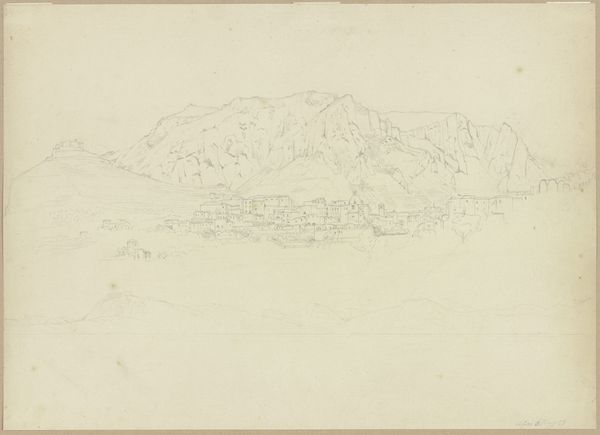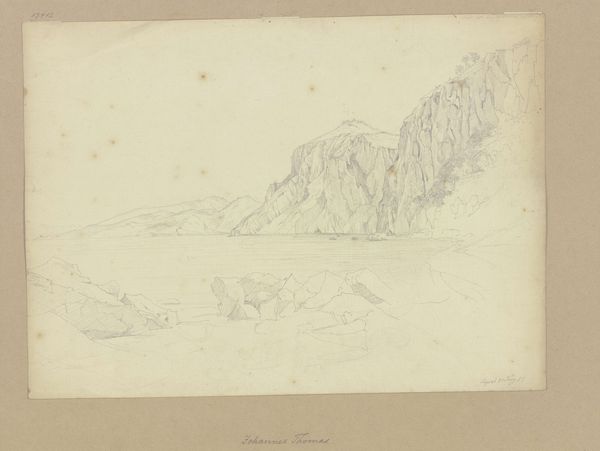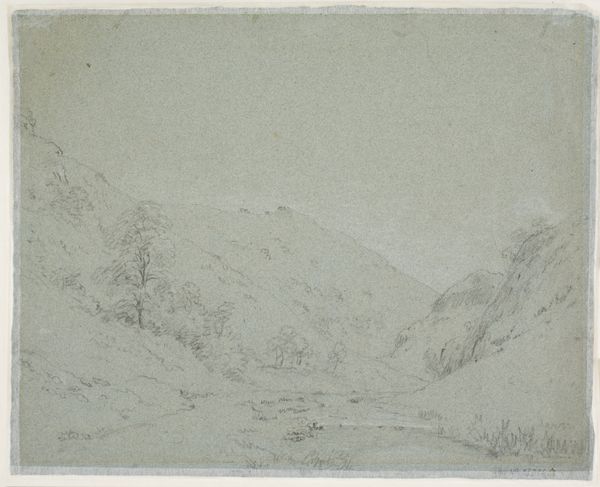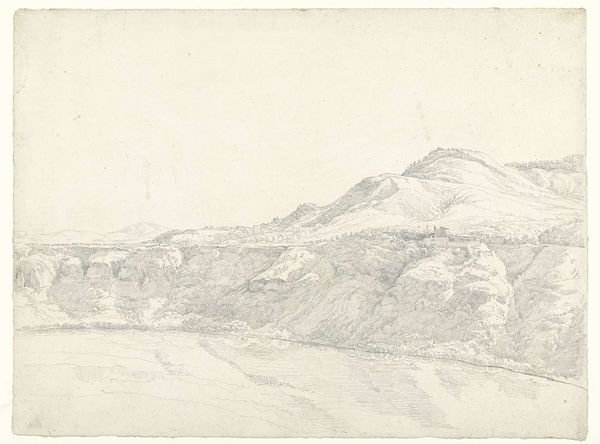
drawing, paper, pencil, graphite
#
drawing
#
landscape
#
paper
#
romanticism
#
pencil
#
graphite
Copyright: Public Domain
Editor: Here we have "Das Göllmassiv mit dem Untersberg," a pencil and graphite drawing on paper, presumably from the hand of Friedrich Preller the Elder. The mountains loom in soft focus; there's a stark simplicity to the composition. What do you see in this piece, from your perspective? Curator: I’m drawn to the artist's choice of medium, the humble pencil and graphite. It speaks to the accessibility of art-making at the time, but also asks us to think about labor. A pencil, paper – these were emerging industries, shaping not only the landscape depicted but also the very *means* of depicting it. Consider how this readily available technology democratized the act of recording and interpreting the natural world. Editor: That’s fascinating; I hadn't considered the pencil itself as part of the story. So, how does that perspective change the way we might view this landscape? Curator: Well, it reframes it, doesn't it? We’re not just looking at mountains; we're looking at the convergence of nature, industrial progress, and artistic representation. The artist's hand, mediated by mass-produced tools, becomes another layer in understanding our relationship with the environment and the systems that both exploit and celebrate it. Notice how precise yet soft the graphite markings are; they show the hand labor, but are created with new industrial means. Editor: So, it’s almost a tension between the romanticism of the mountains themselves, and the rather workaday reality of how the image was created. Curator: Exactly! Romanticism was in some ways a rejection of industrial society but was very much a part of the changes happening at the time. It leads to an interesting friction, don’t you think? Editor: Definitely. It gives me a lot to think about. I’ll never look at a pencil drawing the same way. Curator: Nor will I. Thinking about art in terms of materials brings such a crucial new depth to the viewing experience.
Comments
No comments
Be the first to comment and join the conversation on the ultimate creative platform.
